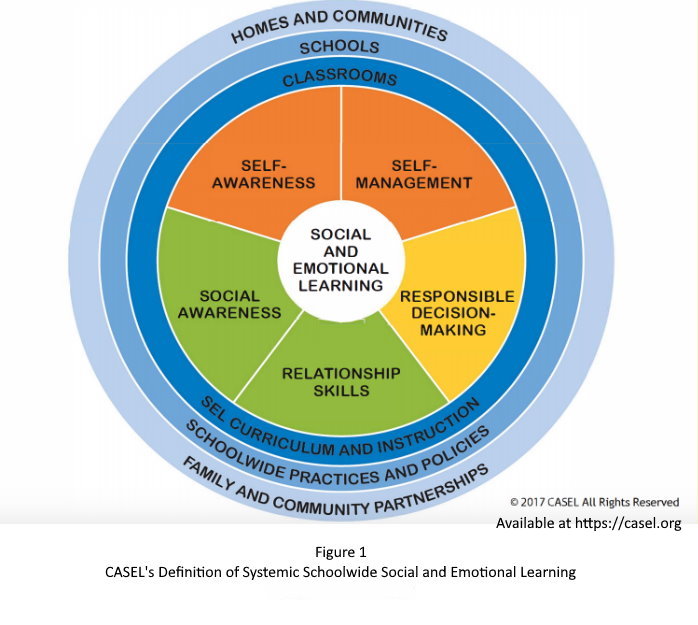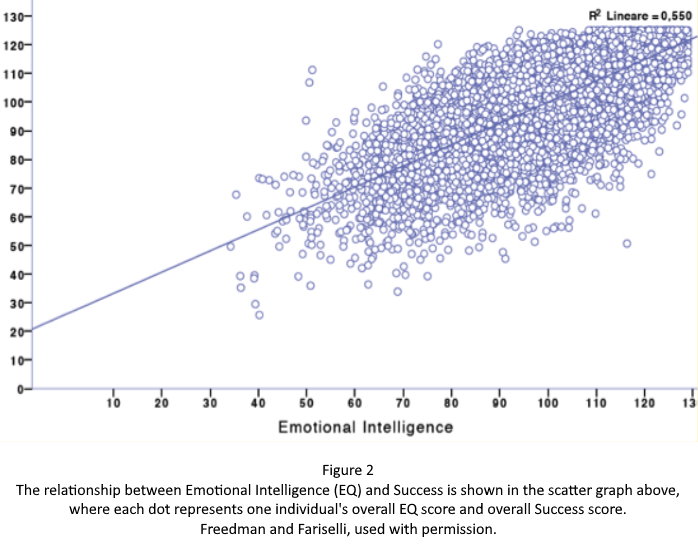If you were to ask ten people about what they most clearly remember of their educational experience as a child, you will likely get ten very different responses. For as diverse and unique as our individual learning experiences have likely been, so too are the teachers and adults responsible for the learning process that takes place in schools across the world. If you were lucky enough to have educators that created a positive and healthy learning environment for you as a student, or better yet - should you aspire to create such an environment for your own students, you must first focus on the common thread that all of these environments possess: Social-emotional learning (SEL).
What is Social-Emotional Learning?
Social-emotional learning has been defined by The Collaborative for Academic, Social, and Emotional Learning (CASEL) as “the process through which children and adults acquire and effectively apply the knowledge, attitudes, and skills necessary to understand and manage emotions, set and achieve positive goals, feel and show empathy for others, establish and maintain positive relationships, and make responsible decisions.” Researchers and educational experts often first link this work to Everett Waters and L. Alan Sroufe’s Social Competence as a Development Construct (1983) which described competent people as those who have the abilities “to generate and coordinate flexible, adaptive responses to demands and to generate and capitalize on opportunities in the environment.” Within this broad range of skills sets, CASEL has further and more specifically identified five main competencies that are the focus of this development (CASEL, 2005).
- Self-Awareness: The ability to accurately recognize one’s emotions and thoughts and their influence on behavior. This includes accurately assessing one’s strengths and limitations and possessing a well-grounded sense of confidence and optimism.
- Self-Management: The ability to regulate one’s emotions, thoughts, and behaviors effectively in different situations. This includes managing stress, controlling impulses, motivating oneself, and setting and working toward achieving personal and academic goals.
- Relationship Skills: The ability to establish and maintain healthy and rewarding relationships with diverse individuals and groups. This includes communicating clearly, listening actively, cooperating, resisting inappropriate social pressure, negotiating conflict constructively, and seeking and offering help when needed.
- Social Awareness: The ability to take the perspective of and empathize with others from diverse backgrounds and cultures, to understand social and ethical norms for behavior, and to recognize family, school, and community resources and supports.
- Responsible Decision-Making: The ability to make constructive and respectful choices about personal behavior and social interactions based on consideration of ethical standards, safety concerns, social norms, the realistic evaluation of consequences of various actions, and the well-being of self and others.
Figure 1 (below) shows that these interrelated learning goals/domains are not only fostered through explicit SEL instruction and curriculum in a classroom setting, but can also be addressed through school-wide procedures and policies as well as through the relationships and partnerships that exist with families and communities (CASEL, 2017).

Research from CASEL indicates that fostering student development through the integration and application of social-emotional skills across the entire arc of their educational experience results in dramatically improved learning and behavioral outcomes, including better academic performance, improved economic mobility, and significantly better classroom behavior. (CASEL, 2011).
Why is Social-Emotional Learning Essential?
Over the course of the last twenty years, a significant amount of focused research has been conducted on not only the best methods for implementation of various SEL-related competencies, but also the short and long-term benefits of this work. A meta-analysis of over 270,000 K-12 students (Durlak, Weissberg, Shellinger, Taylor & Dymnicki, 2011) found that students who participated in evidenced-based Social Emotional Learning practices “...demonstrated significantly improved social and emotional skills, attitudes, behavior, and academic performance that reflected an 11-percentile-point gain in achievement.(p.417)”. The qualities and skills that comprise SEL are the basis of all learning that takes place not just in our schools, but also in our workplaces, communities and homes. They allow us to fully access and achieve our academic potential and ensure that we are positioned to support others in doing so, as well. The development of these competencies allows students to better regulate and adaptively display their emotions, build and foster healthy collaborative relationships with their classmates, teachers, and family members, and employ perspective-taking skills. In the classrooms and school environments where SEL is a focus, the climate of these spaces begins to take on a new shape; one that fuels positive and pro-social communication, that improves student academic outcomes, and that provides welcoming and inclusive opportunities for growth and learning to exist.
While the benefits of school-based SEL within the classroom environment are clearly evident, a great by-product of this work is that it not only creates the foundation for life-long learning but also stimulates the development of some of our most critical interpersonal skills, as well. In order to help a student attain their post-secondary goals as they enter an ever-changing work-force landscape, educators must not only nurture the development of complex cognitive skills, but foster a student’s ability to work collaboratively with others, problem-solve effectively, and demonstrate resilience when they face adversity. The Pew Research Center and Elon University’s Imagining the Internet Center conducted a large-scale canvassing of scholars, practitioners, strategic thinkers and education leaders in the summer of 2016, asking them to weigh in on topics related to workplace training (Raine & Anderson, 2017). One such participant, Simon Gottschalk, a professor in the department of sociology at the University of Nevada, Las Vegas stated: “The skills necessary at the higher echelons will include especially the ability to efficiently network, manage public relations, display intercultural sensitivity, marketing, and generally what author Dan Goleman would call ‘social’ and ‘emotional’ intelligence.”
Acknowledgement of the importance of emotional intelligence is growing. As outlined in their white paper, Emotional Intelligence and Success (2016), Freedman & Fariselli found that there is a direct correlation between one’s emotional intelligence and performance outcomes within a workplace environment (Figure 2, below). They state that emotional intelligence contributes positively “...to one’s effectiveness, quality of life, good relationships, and wellbeing.” Human resource directors across all types of industry and businesses are outlining the qualities that they are seeking, and the focus is often on the skills and attributes that SEL proponents and supporters are working to embed in schools across the world.

Adult Skill-Building is the Foundation for Integrating SEL in the Classroom
Does all of this sound wonderful, exciting, impactful, and yet incredibly daunting to now put into action in the classroom? Don’t worry - you don’t have to go it alone. The process of engaging stakeholders, identifying needs, and creating action plans will take a great deal of focused work from the leadership within your school or district - but it’s not an insurmountable obstacle. There are many best practices and processes from SEL-savvy educators and administrators that you can leverage as part of the process. And while you may rightly be asking “Where on Earth do I start?!”, the answer is surprisingly simple: With the adults in your own building.
Well in advance of any systemic SEL taking root in your classrooms and schools, ground-level work must be done to ensure that on an individual level the adults in your building are working to build their own social-emotional skills and attributes. Just like the emergency information reviewed at the beginning of any commercial airline flight outlines the need to put your own oxygen mask on before helping others, so it is with building the foundation of any SEL program within a school or district. Faculty and staff must first work to identify their strengths/weaknesses and create plans to develop their emotional intelligence, cultural awareness, and collaborative skills so that they can model these qualities to students as the larger work of school-wide SEL initiatives are underway. Schools that invest in professional development focused on adult SEL are not only able to reach and teach students from a place of knowledge - they can leverage as part of the learning process the personal experience of developing these crucial skills in preparation for teaching them to others. The genuineness that is created and strengthened through this practice cannot be duplicated by other means. Every staff or class meeting is an opportunity to model this learning authentically.
While there are now dozens (if not hundreds) of valuable and helpful evidenced-based practices and curricula designed to improve and integrate SEL, we must also acknowledge and remember that the most successful school-based SEL initiatives become impactful only through the very nature of each interaction and relationship that is fostered between students, adults, and families. When we do this work with intentionality and deliberateness, we can begin to see more positive and productive interpersonal relationships, improved social and academic outcomes for our students, and a positive increase in the climate of our schools and workplaces.
Additional Resources
Interested in more information on the science, research, and implementation of social-emotional Learning? The following links and resources will help you begin (or continue) your SEL journey:
Websites
CASEL was formed in 1994 with the goal of establishing high-quality, evidence-based social and emotional learning (SEL) as an essential part of preschool through high school education. From the beginning, CASEL was comprised of a distinguished national leadership team that identified key issues to advance the science and practice of SEL. They have a suite of tools that are field-vetted and evidence-based aimed at higher-quality implementation nationwide.
Through our member groups, SEL4US works at the state and community levels to raise awareness of the benefits of SEL, promote and support effective SEL implementation, and advance policies and funding to sustain and spread the use of high-quality SEL.
Parent Toolkit is a one-stop resource developed with parents in mind. It’s produced by NBC News Learn and supported by Pearson and includes information about almost every aspect of your child’s development, because they're all connected. Healthy, successful children can excel in many areas – in the classroom, on the court, and in their relationships with peers and adults.
Books
Promoting Social and Emotional Learning: Guidelines for Educators, Elias , M., Zins, J., Weissberg, R. (1997). Alexandria, VA. ASCD.
All Learning is Social and Emotional: Helping Students Develop Essential Skills for the Classroom and Beyond, Frey, N, Fisher, D, Smith, D. (2019). Alexandria, VA. ASCD.
Handbook of Social and Emotional Learning: Research and Practice, Durlak, J., Domitrovich, C., Weissberg, R., Gullotta, T. (2015) New York. Guilford Press.
TeacherVision Resources
FutureFit: Project-Based SEL Curriculum Framework
Looking for ways to incorporate social-emotional learning, character education, and life skills into your traditional academic curriculum? FutureFit from TeacherVision is a curriculum enhancement framework that helps you quickly and easily integrate SEL and 21st Century skills into the subjects and lessons you're already teaching.
FutureFit Projects: Project-Based SEL Lessons for Grades K-12
FutureFit Projects are designed to supplement a standard 12-15-unit lesson by offering a unique, project-based learning experience that ties together core academic concepts with a set of FutureFit social-emotional and character education skills. Each project is labeled with the FutureFit skills that apply.
Social-Emotional Learning Teaching Strategies and Resources
We have partnered with Breathe For Change, Coping Skills For Kids, BalancED Learning, and Rethinking Mental Health Incorporated to share SEL activities and strategies you can use to support your students to develop essential social-emotional skills and enhance your curriculum.
References
Soufre, L., Waters, E. (1983) Social Competence as a Developmental Construct. Pg. 80
Durlak, J.A., Weissberg, R.P., Dymnicki, A.B., Taylor, R.D., & Schellinger, K. (2011). The impact of enhancing students’ social and emotional learning: A meta-analysis of school-based universal interventions. Child Development. 405-432.
Rainie, L. & Anderson, J. (2017, May, 9) The Future of Jobs and Jobs Training. Retrieved from https://www.pewresearch.org/internet/2017/05/03/the-future-of-jobs-and-jobs-training/
Freedman, J., Fariselli, L. (2nd Edition, March 25, 2016) Emotional Intelligence and Success. Six Seconds Pg.4










